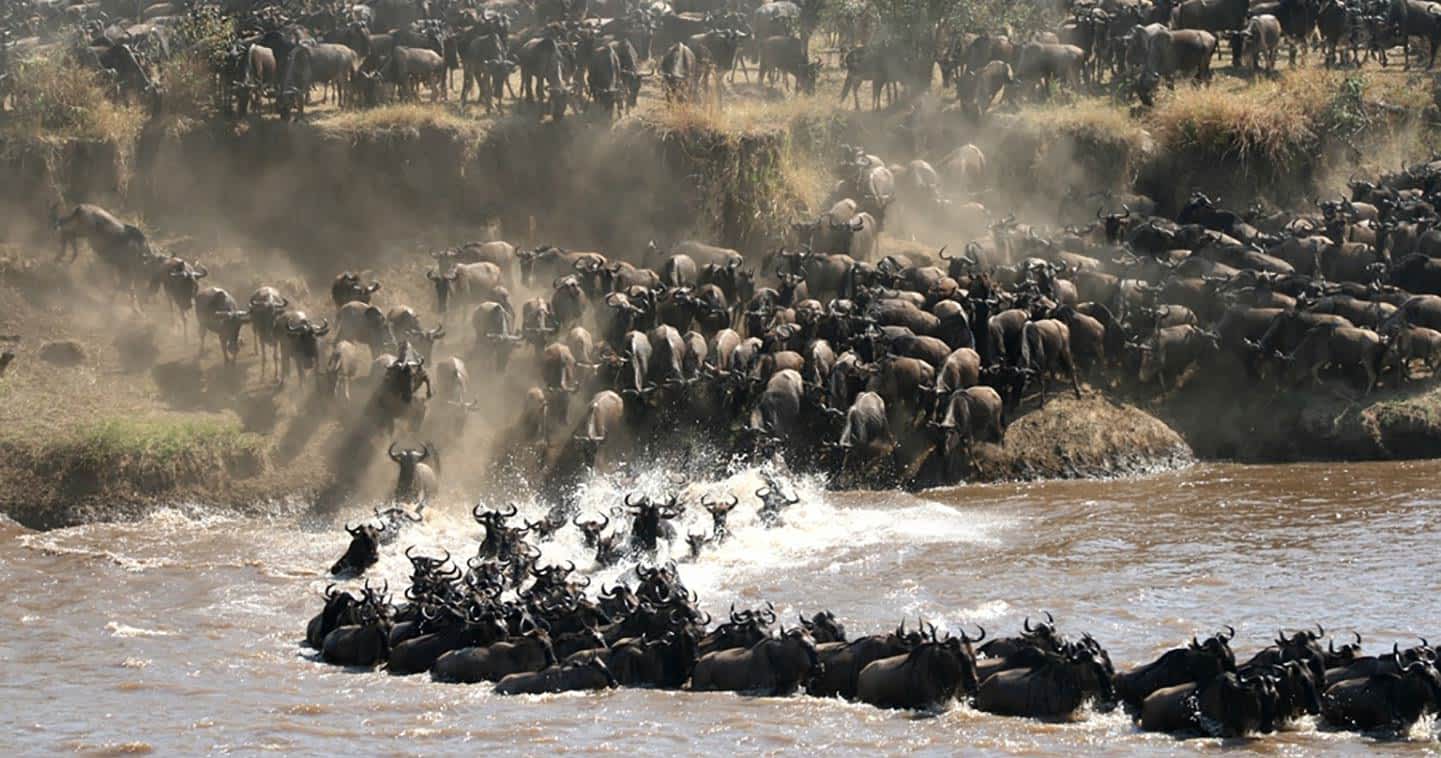
Tanzania’s Great Migration Safaris: Where to Stay and When to Go
Tanzania’s Great Migration Safaris: Where to Stay and When to Go. Tanzania’s Great Migration is one of the most remarkable wildlife spectacles on the planet. Each year, over two million wildebeest, zebras, and gazelles traverse the Serengeti ecosystem in search of fresh grazing lands, closely followed by their predators. This cycle of life and death across the savannah is a breathtaking display of nature’s raw beauty, and witnessing it firsthand is an experience that should be on every wildlife enthusiast’s bucket list. However, understanding where to stay and when to go is crucial in planning a successful Great Migration safari. Each season brings unique opportunities to observe different stages of the migration, and choosing the right location ensures you are in the heart of the action.

The Phases of the Great Migration
The Great Migration is not a single event but a continuous movement that varies throughout the year, driven by rainfall patterns. It can be divided into distinct phases, each offering travelers a chance to witness different behaviors and landscapes.
- Calving Season (January to March): This phase takes place in the southern Serengeti and the Ngorongoro Conservation Area. It’s the time when hundreds of thousands of wildebeest calves are born, and predators take advantage of the abundance of vulnerable prey.
- The Move to Grumeti (April to June): As the rains end, the herds begin their journey northwest, towards the Grumeti River. During this period, they face perilous river crossings, and the large crocodiles lying in wait make this an exciting time to visit.
- The Mara River Crossings (July to September): Often considered the most dramatic phase, the Mara River crossings are iconic. As the herds move into the northern Serengeti and towards Kenya’s Masai Mara, they must navigate the crocodile-infested waters, a sight of both terror and triumph.
- Return to the Serengeti (October to December): The herds make their way back into the Serengeti as the short rains begin. This marks the final phase of their cyclical journey, with the promise of fresh grazing lands as they return to the southern plains.
Understanding these phases helps tailor your travel itinerary to your preferences, whether you’re interested in witnessing the birth of new life or the adrenaline-pumping river crossings.
Best Places to Stay During the Great Migration
Given that the migration spans an extensive area, choosing where to stay depends largely on the time of year you visit. Tanzania offers a range of accommodation options, from luxurious lodges to mobile tented camps that follow the herds. Below are some of the best places to stay during each phase of the migration.
-
Southern Serengeti and Ndutu (January to March)
During the calving season, the southern Serengeti plains and the Ndutu region of the Ngorongoro Conservation Area are the prime spots to stay. The wide-open plains are lush and green, making it an ideal location for photography and wildlife viewing. Calves are born in large numbers, and predators such as lions, cheetahs, and hyenas follow closely.
-
Lodging Options:
- Lake Ndutu Luxury Tented Lodge: Nestled in the heart of the Ndutu area, this luxury tented lodge offers excellent access to the calving grounds. Its comfortable tents and proximity to the wildlife action make it a popular choice.
- Serengeti Safari Camp: This mobile camp moves with the migration, ensuring that you’re always near the action. In the calving season, the camp is located in the southern Serengeti.
-
Western Corridor and Grumeti (April to June)
As the herds move towards the Grumeti River, the western corridor becomes the prime location for witnessing dramatic river crossings. Crocodiles lie in wait as thousands of wildebeest brave the dangerous waters, creating a heart-pounding spectacle.
-
Lodging Options:
- Grumeti Serengeti Tented Camp: Located along the banks of the Grumeti River, this luxury camp offers unparalleled access to the river crossings. Its position within the private Grumeti Reserve means fewer tourists and more exclusive wildlife encounters.
- Singita Faru Faru Lodge: A high-end option for those seeking luxury, Singita Faru Faru provides top-notch service and accommodations while positioning guests right near the heart of the migration.
-
Northern Serengeti and Mara River (July to September)
For many travelers, the highlight of the migration is the Mara River crossings. Between July and September, the herds converge on the northern Serengeti, and you have front-row seats to one of the most intense wildlife events in the world. Crocodiles, fast-moving currents, and panicked wildebeest create a spectacle that is unforgettable.
-
Lodging Options:
- Serengeti Bushtops Camp: This luxurious tented camp in the northern Serengeti offers breathtaking views of the surrounding plains. Its proximity to the Mara River ensures guests are close to the crossing points.
- Mara River Camp: Located just a stone’s throw from the Mara River, this camp offers superb opportunities to witness the crossings without the need for long drives.
-
Central and Eastern Serengeti (October to December)
As the herds begin their return journey south, the central and eastern Serengeti regions become excellent spots for game viewing. The landscape begins to rejuvenate with the short rains, and the herds are once again on the move, followed closely by predators.
-
Lodging Options:
- Namiri Plains Camp: Located in the eastern Serengeti, this camp offers a luxurious and secluded experience. The region is known for its cheetah population, making it a great spot for big cat enthusiasts.
- Serengeti Serena Lodge: A more affordable option, Serengeti Serena Lodge offers stunning views of the plains and excellent access to the migration as it heads back towards the southern regions.

When to Go: Timing Your Visit for Maximum Impact
The timing of your safari is crucial in ensuring that you witness the most exciting parts of the Great Migration. The following tips will help you plan your trip to maximize your chances of catching this incredible spectacle.
- January to March: If you’re fascinated by newborn wildlife and predator interactions, visiting during the calving season in the southern Serengeti is ideal. This is also a great time for photographers, as the green landscapes create beautiful backdrops.
- April to June: For those interested in the dramatic river crossings without the large crowds, the western corridor and the Grumeti River are the places to be. April is typically quieter, but by May and June, the crossings pick up pace.
- July to September: If you dream of seeing the iconic Mara River crossings, then this is the peak season. The northern Serengeti becomes a hub of activity as the herds face the treacherous waters. Be prepared for larger crowds, but the experience is worth it.
- October to December: As the herds begin their return journey, the central and eastern Serengeti become excellent locations to visit. This is also a good time to avoid the peak tourist season while still experiencing a significant portion of the migration.
Conclusion
Tanzania’s Great Migration is an awe-inspiring event that should be carefully planned for the best possible experience. From the calving grounds in the south to the dramatic Mara River crossings in the north, the migration is a year-round spectacle that offers something for everyone. By choosing the right time to go and staying at strategically located lodges and camps, you can ensure that your safari is both memorable and exhilarating. With diverse landscapes, abundant wildlife, and luxurious accommodations, Tanzania provides the ultimate backdrop for one of nature’s greatest shows.
Related Posts;






